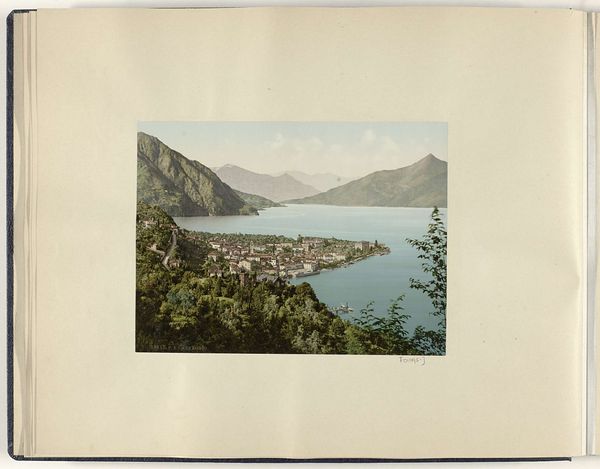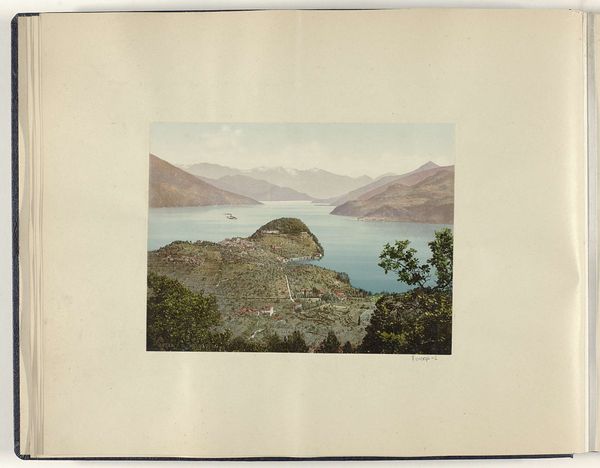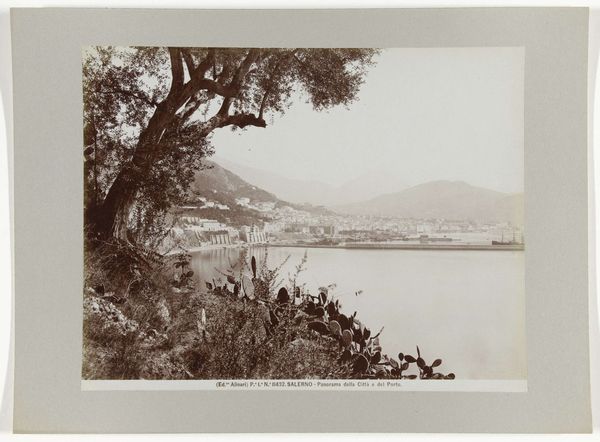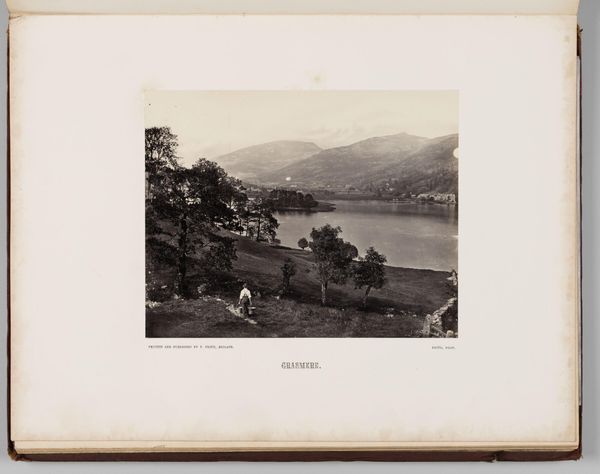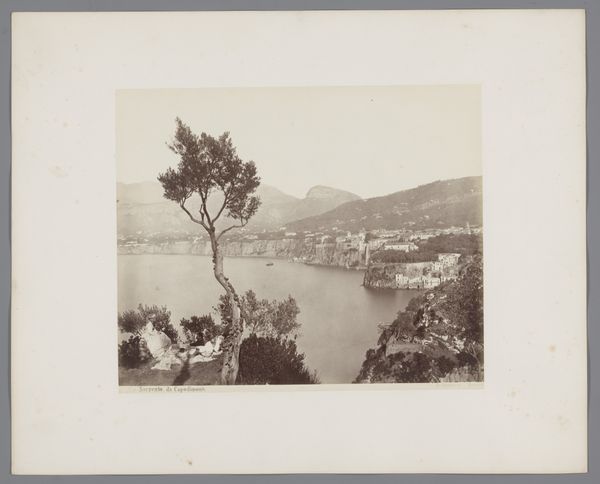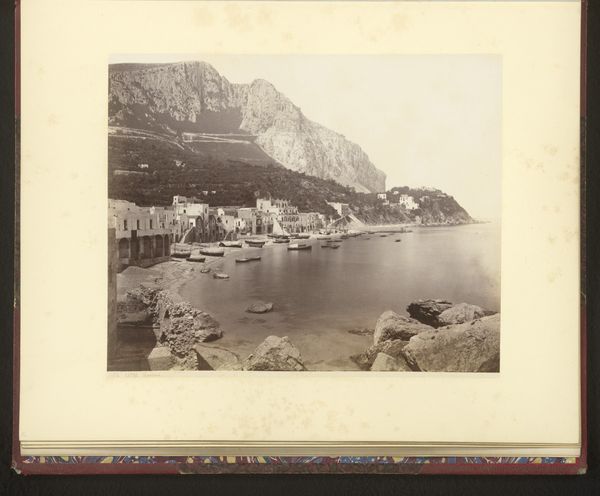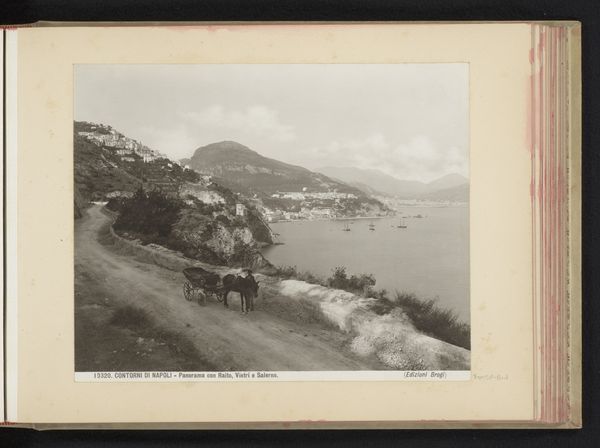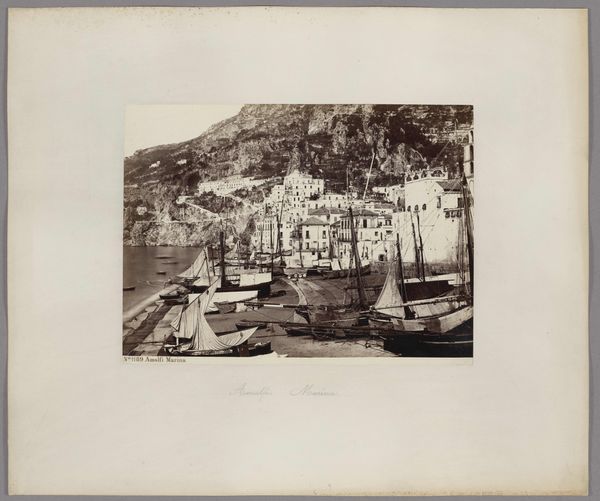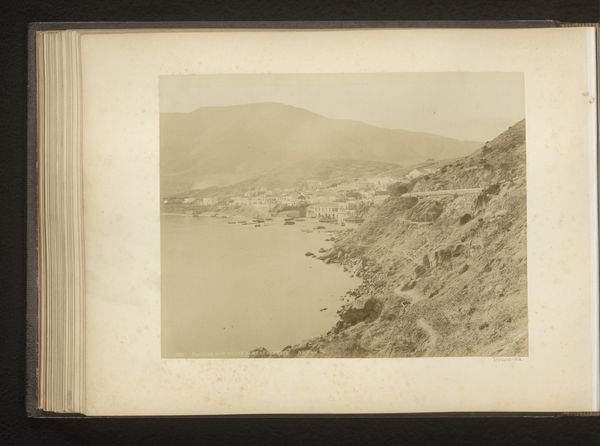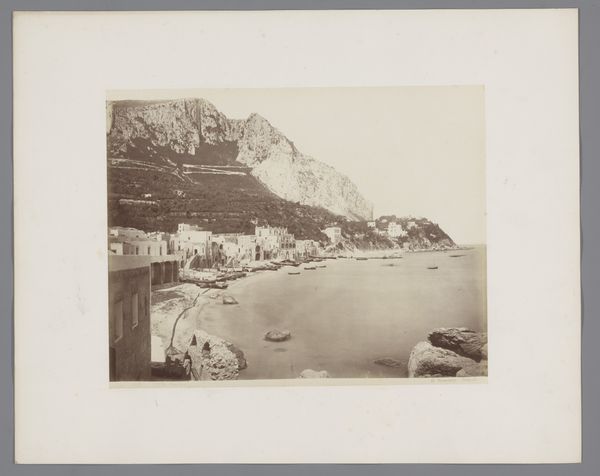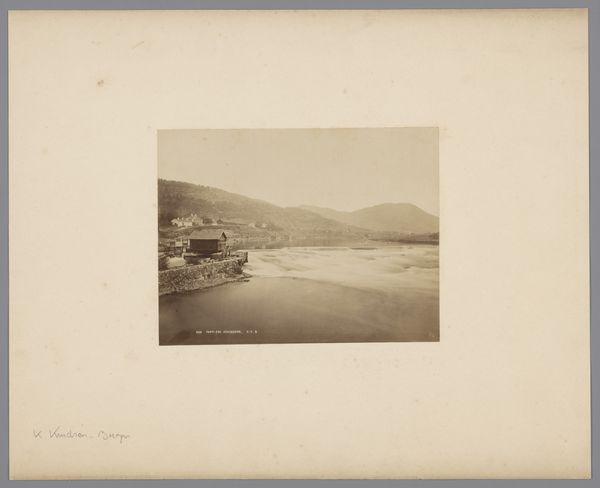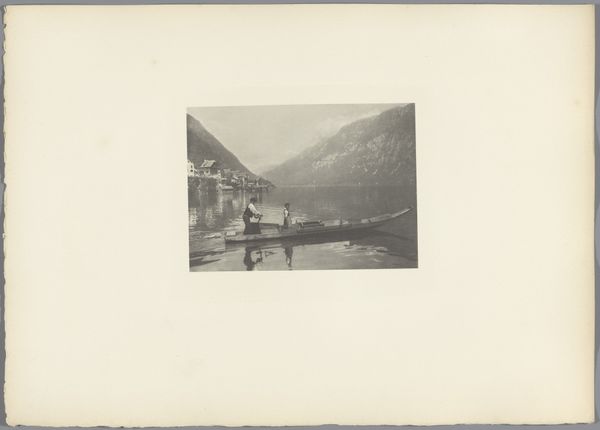
Strand bij Bellagio met roeiers en wassende vrouwen aan het Comomeer c. 1880 - 1900
0:00
0:00
print, plein-air, photography
#
lake
#
water colours
# print
#
impressionism
#
plein-air
#
landscape
#
photography
#
coloured pencil
#
cityscape
Dimensions: height 168 mm, width 224 mm
Copyright: Rijks Museum: Open Domain
Editor: This is "Strand bij Bellagio met roeiers en wassende vrouwen aan het Comomeer," dating from around 1880-1900, by Photochrom Zürich, currently residing at the Rijksmuseum. The photochrom printing gives it a really interesting, almost hyperreal look. What can you tell me about it? Curator: Well, it's intriguing to consider the *photochrom* process itself. These weren't simply photographs; they were painstakingly crafted, using multiple lithographic stones to apply color. We should be aware that each colour in this image stands for a separate printing, which implies skilled labour and expensive resources. How does understanding its mass reproducibility for the burgeoning tourist market influence your perception? Editor: That's fascinating! So, it’s less about capturing a singular moment, and more about producing a desirable image for consumption? Curator: Precisely. Consider the labor involved: the photographers capturing the initial images, the workers meticulously transferring those images onto lithographic stones, and then the printers themselves. And where were these images consumed? Think of postcards, travel brochures—all contributing to a very specific, idealized vision of Bellagio. This image not only depicts Bellagio, it helped *construct* it as a destination. Editor: That makes me think about the subjects chosen too – the laundry looks romanticised, when it really signifies labour... Curator: Exactly. The "wassende vrouwen" become part of the picturesque landscape, obscuring the reality of their labor. Is it fair to say this photograph presents a sanitised and manufactured vision of life by the Comomeer? How might the local community react to the circulation of this idyllic imagery, bearing in mind their exclusion of the means to its production and circulation? Editor: I see now. Looking at it as a constructed commodity rather than a candid snapshot gives the image a totally new dimension. I was focused on the pretty colours before, not the work behind them. Curator: Precisely! And that shift, that focus on process and production, allows us to unpack so much about the social and economic forces at play during this period.
Comments
No comments
Be the first to comment and join the conversation on the ultimate creative platform.
